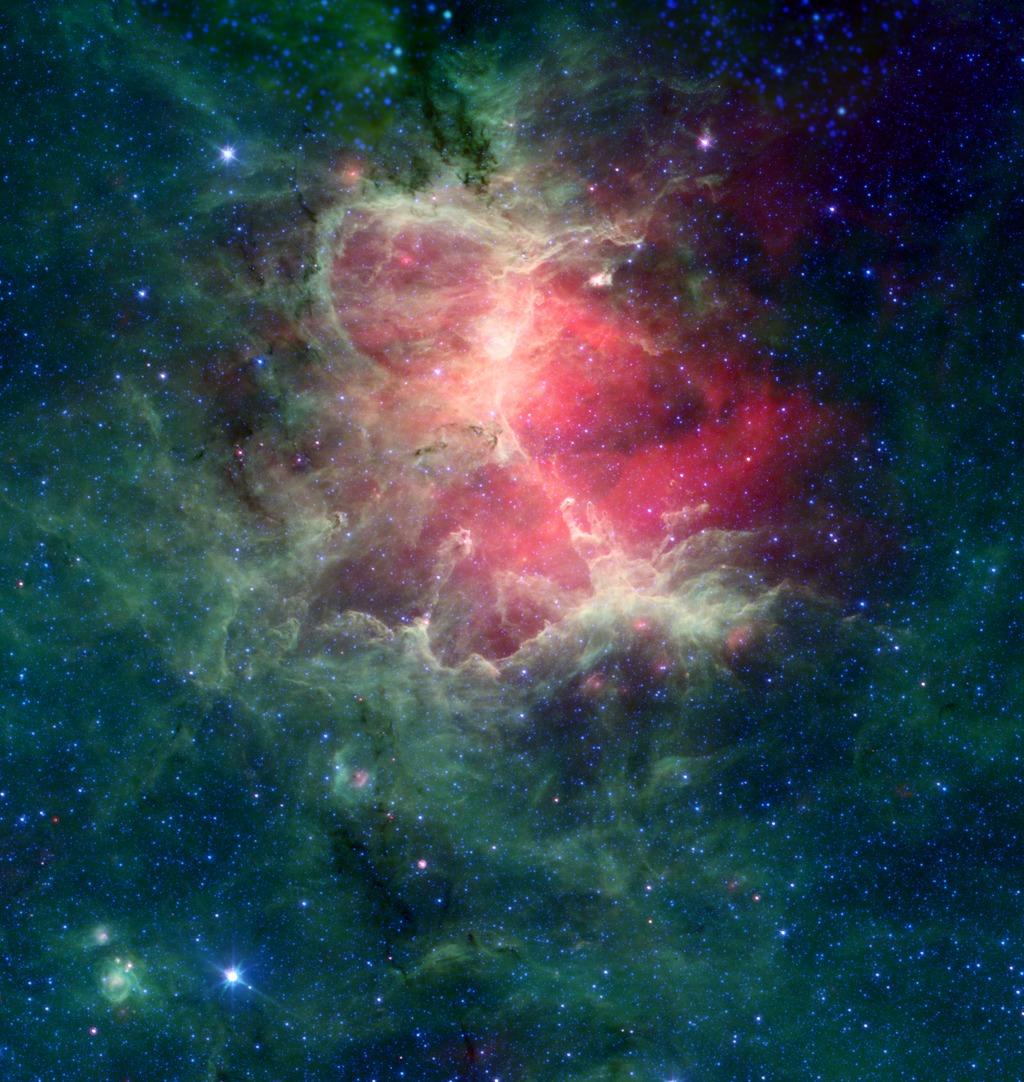
Credit: NASA/JPL-Caltech
Observation • August 25th, 2023 • ssc2023-05
ssc2023-05
The Eagle Nebula (M16) is one of the best-known regions of star formation in our galaxy as it is host to the iconic “Pillars of Creation.” This infrared view of the region highlights the extensive fields of dust, gas, and stars that are hidden from view in visible light, and was rendered from archival data from NASA’s Spitzer Space Telescope. Spitzer is now celebrating the 20th anniversary of its launch, and although it stopped collecting new observations after its retirement in 2020 it has left a vast legacy of data spanning the solar system, Milky Way, and the galaxies beyond that will help shape the questions astronomers hope to answer with new generations of telescopes like JWST.
In this image, infrared light at wavelengths of 4.5, 8.0, and 24 microns is displayed as blue, green, and red, respectively. The data are from the mission archive of NASA’s Spitzer Space Telescope.
About the Object
- Name
- Eagle Nebula • M16 • NGC 6611
- Type
- Nebula > Type > Star Formation
- Distance
- 5,700 Light Years
Color Mapping
| Band | Wavelength | Telescope |
| Infrared | 4.5 µm | Spitzer IRAC |
| Infrared | 8.0 µm | Spitzer IRAC |
| Infrared | 24.0 µm | Spitzer MIPS |
Astrometrics
- Position (J2000)
- RA =18h 19m 2.8s
- Dec = -13° 47' 22.1"
- Field of View
- 49.8 x 52.6 arcminutes
- Orientation
- North is 61.8° left of vertical



